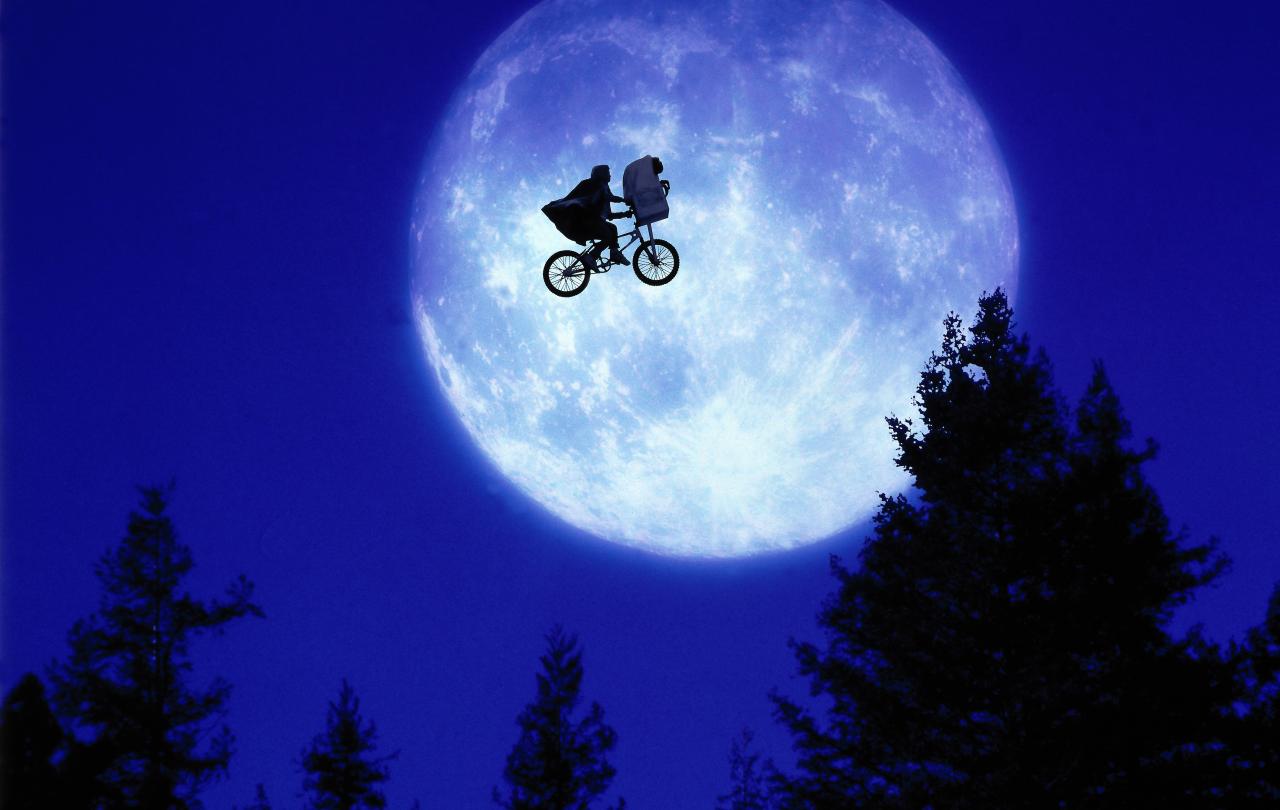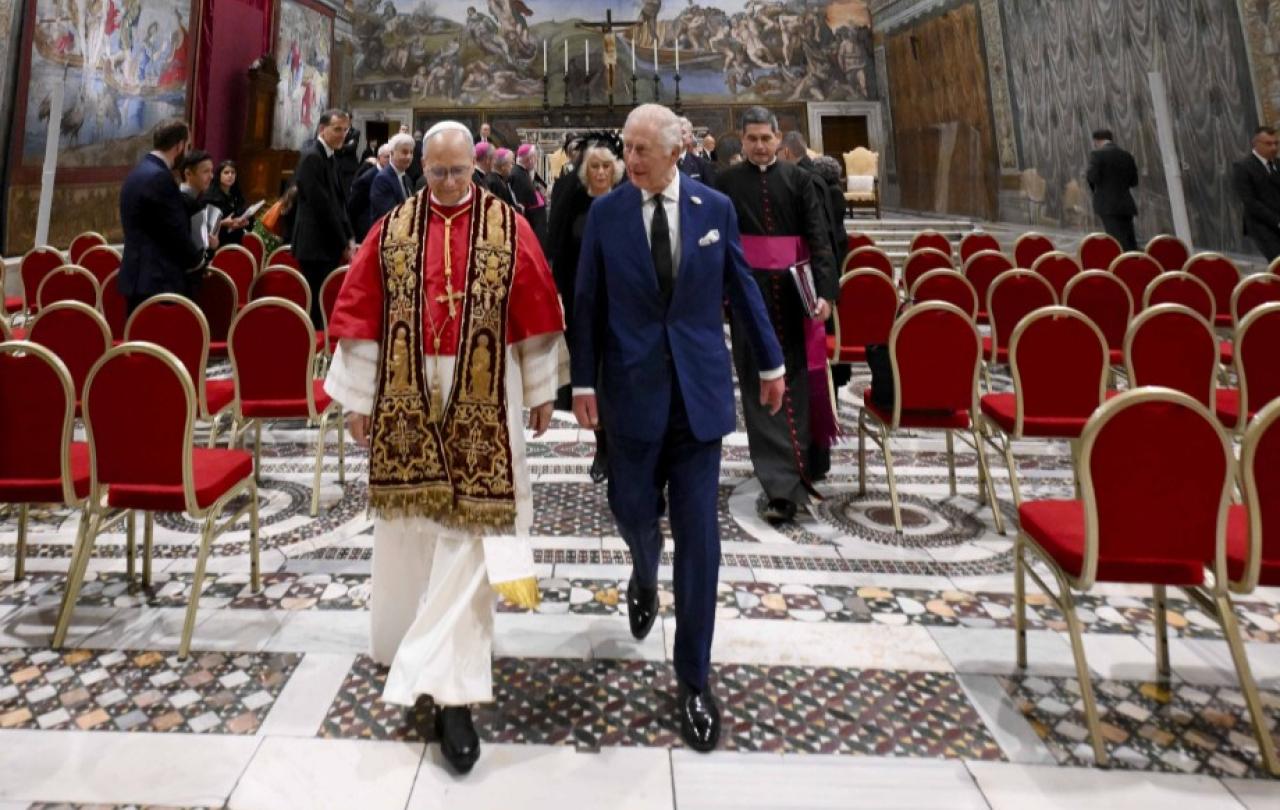
Halloween can be exhausting these days. As we continue to import and cement more and more of the American cultural experience, and as I age into maturity and (especially) fatherhood, I find myself spending All Hallow’s Eve in two ways (neither of which is prayer and meditation of the hallowed Saints of the Church, or the Faithful Departed Souls who now rest in Christ): I can take my daughter trick-or-treating, or I can stay home and desperately throw handfuls of sweets and the horde of children in fancy dress who arrive at my door. I always choose option A…I’m a priest…I have a ready-made costume. To aid in the convalescence necessary after such an exhausting evening, I have compiled by Top 5 Halloween Films.
NOTE: This list is in no particular order, and the entries are not all horror films. In an effort to be ecumenical, and to bring solace to those of all temperaments and dispositions, I’ve taken my criteria as films set on, or around, Halloween. I hope there is at least one offering here that might intrigue and delight you.
5. The Crow
A supernatural superhero flick which has gained cult status, this film kicks off the list in style. What style, you ask? The inimitable style of the 90s. Eric Draven and his fiancée are murdered on ‘Devil Night’ (also known as ‘Mischief Night’), on the eve of their Halloween wedding, leaving a distraught Sarah – the young girl they care for. One year later, Eric is resurrected by the spirit of the Crow, who shepherds souls to the afterlife, and resurrects those who die by evil and violence as undead warriors with a mission to find revenge and, perhaps…peace? Certainly not to begin with!
This film is perfect Halloween fare for those who want the grit and vibe of the holiday without actually having to engage with real fear. The 90s was a decade of looking and sounding edgy without any commitment: the decade of bark, not bite. Brandon Lee (who died during filming in a prop accident – a star in the making, taken too soon) looks terrific as Eric Draven/The Crow, covered in black leather and face paint, excelling at fight and stunt choreography, and towing the line of camp perfectly. The setting is moody darkness and rain and neon, and gothic gargoyles! The music underpins the atmosphere superbly…I mean…the title track is by The Cure! It goes hell for leather in a deliciously pantomimesque fashion and is well worth a watch for spooky fun without the fear.
4. Halloween II
The unwanted sibling. The sequel that was never meant to happen. It is unclear to me quite what it was that forced John Carpenter and Debra Hill back to the writing room (perhaps the threat that this sequel would happen with or without them), but it certainly wasn’t passion for the project! Carpenter has described the writing process as one where he essentially had to be drunk to get through it. I must say, if this is the case, it doesn’t show! Halloween II picks up right where the original ends, Laurie Strode (Jamie Lee Curtis) is catatonic after surviving the Haddonfield Halloween night massacre and is immediately transported to hospital. The murderous Michael Myers has disappeared after being shot by his psychiatrist, Dr Loomis (Donald Pleasance returning with the most delightfully hammy performance…in fact with the whole back half of the pig), and now Loomis is back on the hunt. It is all leading to a blood-soaked showdown in Haddonfield Memorial Hospital, and the most contrived plot-twist in horror history; necessary, Carpenter says, for any of this forced sequel (to a perfectly conceived standalone film) to make sense. It isn’t a patch on its progenitor, but it is far better than it deserves to be, allows you to spend some more time with beloved characters, cranks everything up to 11, and is a guilty pleasure of mine – me, a man of taste and refinement, a connoisseur of the creepy, a gentleman in the gathering of the ghoulish.
3. E.T.
One for the kids now, especially for those children who find Halloween a bit too much. This is the film that proved Steven Spielberg isn’t just a good filmmaker – he is one of the finest ever to pick up a camera, able to master any story in any genre. E.T. is a small alien who is separated from his group on a routine mission to collect plant samples from Earth. He is taken in by a young boy, Elliot, and protected from the government agents trying to capture him. Over the coming days the two bond, developing an odd empathic link that gives Elliot confidence in school, and gives the two much joy and laughter at home. Soon it is time for E.T. to ‘phone home’ and return to his own planet. Naturally this escape attempt takes place on Halloween, so that the little gremlin-like creature can wear a bedsheet without attracting unwanted attention. After several near escapes form the law, E.T. and Elliot have a goodbye so emotional and poignant that I dare you to watch this with your little ones and not cry…go on…I DARE YOU! E.T. is everything a children’s story should be, and has everything it should have: aliens, coming-of-age shenanigans, clueless parents, a chase with levitating bicycles. It is perfect, and perfectly gentle for a Halloween wind down as a family.
2. Batman Forever
Now, I was thirteen when Batman Begins was released; a man of grey-hair and wrinkled visage by the standards of comic books. As a result, Christian Bale is not my Batman – the raspy voice just grates on me! Michael Keaton is my Batman, and is, to this day, the best Batman. However, none of the Keaton films have a Halloween setting as far as I’m aware, so I’m going to recommend the Val Kilmer take on the caped cruder. Kilmer is the billionaire bad-boy Bruce Wayne, a mask he wears to hide his true identity as the crime fighter Batman. Tommy Lee Jones is the once upstanding prosecutor Harvey Dent, who went mad after having acid thrown in his face, and has become the supervillain Two-Face. Jim Carrey plays Edward Nygma, a scientific genius who is researching a technology to send TV signals directly to the brain – research that Bruce Wayne shuts down due to its potential for mind control. Nygma takes on the guise of The Riddler, and he and Two-Face begin to commit a series of robberies to fund the research and, eventually, take down Batman. Their plan culminates on Halloween night, which might explain why no one questions maniacs in ridiculous costume running around Gotham City.
If you think The Crow is camp (which it is) you haven’t seen anything yet. The gothic is more gothicky, the leather is more leathery, the neon will burn the eyes right out of your skull, and I’m not sure if you can get more 90s than a gurning Jim Carrey menacing Nicole Kidman while Val Kilmer smoulders in anger. If you can keep a secret…I know this film is rubbish, but it was the ‘latest’ Batman film as I was growing up, and I actually really like it, and it brings back so many memories of my childhood, excitedly sitting in front of the telly to watch the action for the fiftieth time. Highly recommended, for the sheer operatic silliness of the film alone – and what is Halloween for if not operatic silliness?
1. Halloween
Of course this was going to be on the list. This is THE Halloween film. This is so much a part of the cultural memory that I’m not sure I even need to give a plot synopsis or explain my recommendation. Instead, I could just list the people involved and leave it at that. John Carpenter writing (with Debra Hill), directing, doing the music, probably making the cast’s lunch and everything else! Jamie Lee Curtis in the lead, essentially creating the ‘final-girl’ trope of the slasher flick, and doing it so brilliantly that it has only ever been imitated but never topped. Donald Pleasance…is also there. I can’t quite describe his performance: is it a genius deconstruction of trope and cliché in a valiant attempt to understand the warring forces of light and darkness in the human heart, or is it the work of a man who missed the lunch Carpenter prepared and so has decided to devour the scenery instead? He is bonkers – and I’m here for it!
Curtis is Laurie Strode, an innocent and virginal (vitally important in the mythos of what becomes the ‘final girl’) high schooler, who will be spending Halloween night babysitting Tommy Doyle while her friends do – ahem – what teenagers do. Honestly, they couldn’t have picked a worse time or place to engage in underaged drinking and pre-marital sex. Haddonfield on Halloween night in 1978 is essentially an abattoir for the morally flexible teen. Because…Michael Myers is on the prowl. Introduced at the start of the film (in a POV shot that has stood the test of time for its chill and shock factor!) as a six-year-old boy who inexplicably stabs his sister to death on Halloween. He is committed to an asylum under the care of Pleasance’s Dr Loomis. On Halloween night, 15 years later, he escapes. Loomis, who’s time with Michael has turned him into a different type of madman, is horrified and starts hunting Michael, accosting innocent children, and all the while screaming about ‘THE EVIL HAS ESCAPED’…he also wonders why the police don’t take him seriously.
Michael stalks Laurie and her friends, picking them off one-by-one, until only Laurie is left to fight and survive. The film is perfectly taught and lean and coiled: the tension ratchets and ratchets and ratchets until you don’t think you can take anymore. What makes this one of the finest horror films, and my favourite one to watch on Halloween night itself, is its simplicity. Michael Myers has no explanation. Why he killed his sister, why he hunts Laurie, how he is so strong and fast and seemingly invulnerable. He simply is. He happens. He is a force of nature that has no discernible cause or motive. Sometimes evil is like this, and I find my annual viewing of Halloween a tremendous restorative – a reminder of an age when the horror movies didn’t spoon-feed you backstory and explanations…they just gave you damn-good scares!
Support Seen & Unseen
Since Spring 2023, our readers have enjoyed over 1,500 articles. All for free.
This is made possible through the generosity of our amazing community of supporters.
If you enjoy Seen & Unseen, would you consider making a gift towards our work?
Do so by joining Behind The Seen. Alongside other benefits, you’ll receive an extra fortnightly email from me sharing my reading and reflections on the ideas that are shaping our times.
Graham Tomlin
Editor-in-Chief





